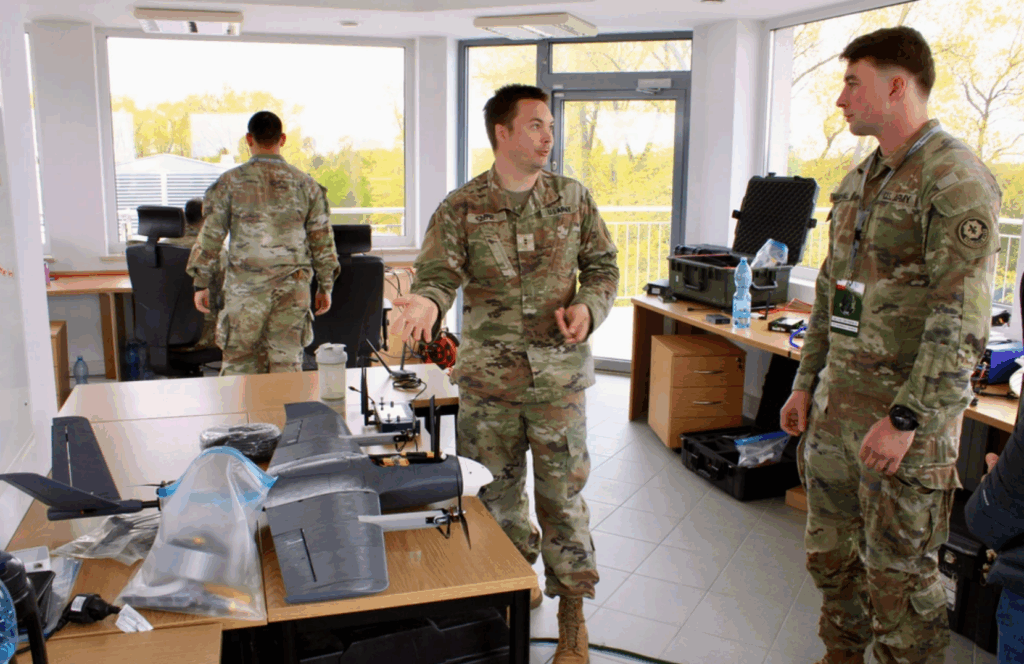WIESBADEN (Realist English). As unmanned systems take center stage in modern warfare, U.S. Army units are racing to create effective training programs that prepare soldiers to operate drones and counter-drone systems — even between major field exercises.
After concluding Exercise Arcane Thunder in Europe, Army leaders said Friday that traditional training infrastructure isn’t enough to keep pace with evolving multi-domain combat environments. To fill the gap, units are now experimenting with virtual simulations and home-station drills designed to give operators more frequent, targeted practice.
“We’ve spent 250 years building ranges for tanks, helicopters and rifles,” said Maj. Gen. John Rafferty, commander of the 56th Artillery Command in Wiesbaden. “But now we need to work just as hard to find spaces — physical or virtual — where we can train the full spectrum of multi-domain capabilities.”
At the heart of that shift is the 2nd Multi-Domain Task Force (MDTF), one of four specialized formations testing next-generation technology and operational concepts. To meet the growing need for continuous training, the 2nd MDTF’s Multi-Domain Effects Battalion partnered with its in-house innovation lab to develop a low-cost, game-like training simulator.
“It’s essentially a video game,” said Lt. Col. Aaron Ritzema, the battalion’s commander. The system merges first-person drone software used by Ukrainian forces with existing U.S. mission command platforms, enabling joint practice sessions between drone operators and electronic warfare (EW) teams — who manage the jammers that protect or disrupt UAVs.
The simulator proved its worth during Arcane Thunder, Ritzema added, offering the first opportunity for aviation and EW teams to co-train in a shared environment. “We saw them learning to coordinate their platforms, maneuver payloads, and provide the timely sensing data we need,” he said.
The training tool also became a focal point at the Army Innovation Forum, where MDTF units gave feedback on how to institutionalize ongoing drone instruction. “This was a major discussion topic across all of the Army’s ‘Transformation in Contact’ formations,” Ritzema said. “Everyone’s trying to figure out how we scale virtual training for these emerging capabilities.”
The push comes amid rising interest in long-range drones and drone countermeasures across U.S. forces, especially in the Pacific theater, where multi-domain operations and electronic warfare are already central to U.S. strategy.
The Army’s shift toward virtualized drone training signals a broader recognition: the speed of technological change demands faster, more flexible training cycles. As drone warfare redefines battlefield advantage, mastery won’t just depend on hardware — but on how well soldiers rehearse in every environment, including digital ones.
